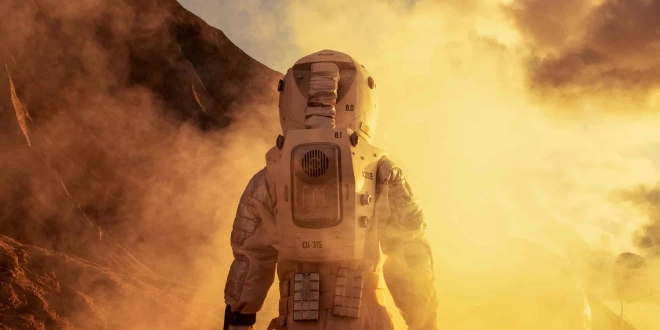A potential site on Mars with the capacity to support human life has been identified by a research team led by planetary geologist Erica Luzzi from the University of Mississippi. The area, known as Amazonis Planitia, is a broad volcanic plain situated in the mid-latitudes of the Martian surface. Early analysis indicates the presence of shallow subsurface water ice—an essential resource for any future missions involving human habitation.
The team used data from NASA’s Mars Reconnaissance Orbiter to study high-resolution images of the terrain. Specific surface features—such as polygonal cracking, rim-brightened craters, and slight variations in topography—bear similarities to landforms found in Earth’s permafrost regions. These indicators suggest that water ice could lie less than one meter below the Martian surface, potentially making it accessible to drilling operations that do not require complex equipment or heavy infrastructure.
Strategic location for future missions
While polar regions on Mars contain confirmed and abundant ice deposits, their harsh climatic conditions and limited exposure to sunlight make them less practical for manned missions, especially those relying on solar power. Equatorial regions, despite receiving more sunlight, typically have ice buried far deeper beneath the surface. Amazonis Planitia, located in the temperate mid-latitude zone, offers a unique compromise. It combines relatively moderate temperatures with sufficient solar exposure while maintaining environmental conditions suitable for preserving near-surface ice.
The presence of accessible ice is a critical component of in situ resource utilization (ISRU), an approach that focuses on using local materials rather than transporting everything from Earth. Water is not only needed for hydration and agricultural applications but can also be split into hydrogen and oxygen to produce breathable air and rocket fuel. Leveraging local ice would drastically reduce the logistical and financial burden of future Mars missions.
Planned research and scientific benefits
Although initial signs are encouraging, the team emphasized the need for further validation. Confirming the quantity, distribution, and stability of the subsurface ice will require additional tools and missions. Advanced radar instruments and robotic drills are expected to be employed in future exploration efforts. NASA’s SHARAD radar, already deployed in orbit, and the forthcoming Mars Ice Mapper—developed in collaboration with the European Space Agency—are among the technologies planned to assess subsurface composition more precisely.
In addition to its utility for supporting life, Martian ice may offer valuable scientific insights. Frozen layers could contain trapped gases or biological markers from earlier epochs, acting as time capsules of the planet’s geological and climatic history. Studying these preserved elements could deepen understanding of Mars’ evolution and the potential existence of ancient microbial life.
As preparations continue for future manned missions to Mars, Amazonis Planitia emerges as a focal point for both logistical planning and scientific inquiry. The combination of environmental conditions, resource availability, and exploratory potential positions it as a leading candidate in the search for viable long-term habitation sites on the Red Planet.


